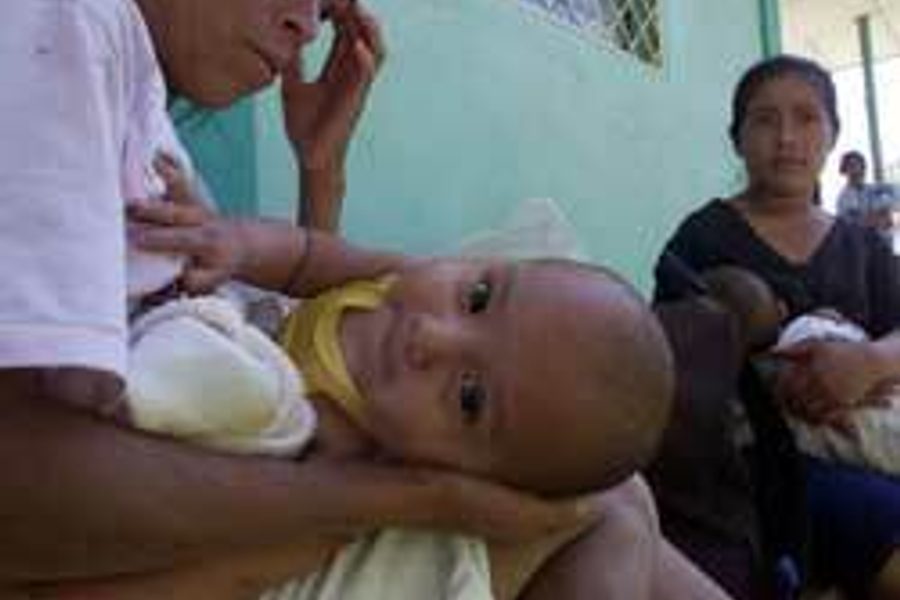Two years ago, at the invitation of the U.N. Population Fund, I traveled to Nicaragua for a few weeks to learn firsthand about some of the reproductive health programs that had been set up for women living in rural areas. I went prepared to see poverty—after all, Nicaragua had been embroiled in a civil war until 1979, and then a vicious power struggle between the socialist Sandinista government and the U.S.-supported Contras well into the ’80s.
But I didn’t expect to find so many women living in appalling, oppressive conditions. Domestic violence is present in almost every household, and even the most basic health and reproductive care is largely inaccessible outside Managua. Women still need their husbands’ written permission for any surgical procedures affecting fertility, such as tubal ligations. I spent the entire trip wondering: What had become of the progressive, post-dictatorship agenda that had touted full equality for all? Where were the gains that so many women had fought and died for during the Sandinista Revolution?
More recently, I came across a new book by acclaimed Nicaraguan poet Gioconda Belli, The Country Under My Skin: A Memoir of Love and War. There, encrypted within the author’s typically luminous prose, were the answers to many of my questions. Unlike her best known novel, La Mujer Habitada (a thinly veiled story of a young Nicaraguan debutante whose burgeoning feminist sensibilities awaken her to the larger economic and racial injustices in her country under the Somoza dictatorship), Belli’s latest work is a passionate recounting of her years as a Sandinista revolutionary. She’s as brutally honest about the failings of her political party as she is about some of her own choices.
Belli has often written about her body as a metaphor for her country, and now she describes in frank detail the degree to which she lived that metaphor. At every stage of her journey, there’s a new passion. Her husband, whom she married at 19 in her haste for adult life to begin—and with whom she had two daughters—was quickly replaced in her affections, first by a poet who encouraged her to write and introduced her to bohemian Managua, then by a guerrilla fighter who was killed by Somoza’s National Guard.
Before the Sandinista victory, she worked underground, using her day job in an advertising agency as a cover for collecting information and filing reports to the Sandinistas on prominent citizens. She worked as a courier, ferrying money and weapons. She had to flee into exile, was tried in absentia and sentenced to seven years in jail, then flew back to Managua the day after the fall of the dictatorship bearing the first edition of the new government’s newspaper.
————–
But there’s plenty more to the book than Belli’s emotional ups and downs. Personal anecdotes complement rather than dominate The Country Under My Skin. Two particularly great chapters touch upon Belli’s tours of the former Soviet Union and Eastern Bloc, Libya and Algeria. Then there were the crude propositions she got from Omar Torrijos, the dictator of Panama, and the more subtle come-ons by Fidel Castro.
Some purists of the political memoir genre might decry the inclusion of such salacious details, but, as Belli points out, being sexualized even while in full battle garb was (and still is) a reality for women in progressive movements. And, to give Belli further credit, she’s willing to go where few feminists will and admit she had a role in creating that dichotomy: “I had exposed myself to bullets, death; I had smuggled weapons, given speeches, received awards, had children—so many things, but a life without men, without love, was alien to me, I felt I had no existence unless a man’s voice said my name and a man’s love rendered my life worthwhile.”
Belli’s own disillusionment with the Sandinistas, concealed at the time, is also frank in this account. The growing authoritarianism of the Ortega brothers, Humberto and Daniel (later accused by his stepdaughter of sexual abuse), as well as the recklessness with which they cultivated ties with the Soviet bloc, made them an easy target for the Reagan administration, and brought their own revolution down in flames.
The Ortegas could certainly have been wiser, but it would probably have made no difference. The Sandinistas came to power when Jimmy Carter was president and benefited from Carter’s perception that U.S. aid to Nicaragua could keep the Sandinistas out of the Soviet camp. It might have worked—had the next administration shared Carter’s vision. But in Reagan, the Sandinistas encountered an enemy as ideologically determined as Fidel, and one who was not prepared to tolerate either support for El Salvador or anti-Yanqui posturing.
And it’s worth noting, as Argentina’s economy continues to falter and Venezuelan President Hugo Chavez staves off attempts to oust him, that many of those who brought down the Sandinistas are back in power: Otto Reich, John D. Negroponte, John Poindexter, even Ollie North’s being recycled these days. It would behoove all Americans to remember that these were the men behind the Cold War millstones that ground Nicaragua and its once progressive revolution into powder.
But I didn’t expect to find so many women living in appalling, oppressive conditions. Domestic violence is present in almost every household, and even the most basic health and reproductive care is largely inaccessible outside Managua. Women still need their husbands’ written permission for any surgical procedures affecting fertility, such as tubal ligations. I spent the entire trip wondering: What had become of the progressive, post-dictatorship agenda that had touted full equality for all? Where were the gains that so many women had fought and died for during the Sandinista Revolution?
More recently, I came across a new book by acclaimed Nicaraguan poet Gioconda Belli, The Country Under My Skin: A Memoir of Love and War. There, encrypted within the author’s typically luminous prose, were the answers to many of my questions. Unlike her best known novel, La Mujer Habitada (a thinly veiled story of a young Nicaraguan debutante whose burgeoning feminist sensibilities awaken her to the larger economic and racial injustices in her country under the Somoza dictatorship), Belli’s latest work is a passionate recounting of her years as a Sandinista revolutionary. She’s as brutally honest about the failings of her political party as she is about some of her own choices.
Belli has often written about her body as a metaphor for her country, and now she describes in frank detail the degree to which she lived that metaphor. At every stage of her journey, there’s a new passion. Her husband, whom she married at 19 in her haste for adult life to begin—and with whom she had two daughters—was quickly replaced in her affections, first by a poet who encouraged her to write and introduced her to bohemian Managua, then by a guerrilla fighter who was killed by Somoza’s National Guard.
Before the Sandinista victory, she worked underground, using her day job in an advertising agency as a cover for collecting information and filing reports to the Sandinistas on prominent citizens. She worked as a courier, ferrying money and weapons. She had to flee into exile, was tried in absentia and sentenced to seven years in jail, then flew back to Managua the day after the fall of the dictatorship bearing the first edition of the new government’s newspaper.
————–
But there’s plenty more to the book than Belli’s emotional ups and downs. Personal anecdotes complement rather than dominate The Country Under My Skin. Two particularly great chapters touch upon Belli’s tours of the former Soviet Union and Eastern Bloc, Libya and Algeria. Then there were the crude propositions she got from Omar Torrijos, the dictator of Panama, and the more subtle come-ons by Fidel Castro.
Some purists of the political memoir genre might decry the inclusion of such salacious details, but, as Belli points out, being sexualized even while in full battle garb was (and still is) a reality for women in progressive movements. And, to give Belli further credit, she’s willing to go where few feminists will and admit she had a role in creating that dichotomy: “I had exposed myself to bullets, death; I had smuggled weapons, given speeches, received awards, had children—so many things, but a life without men, without love, was alien to me, I felt I had no existence unless a man’s voice said my name and a man’s love rendered my life worthwhile.”
Belli’s own disillusionment with the Sandinistas, concealed at the time, is also frank in this account. The growing authoritarianism of the Ortega brothers, Humberto and Daniel (later accused by his stepdaughter of sexual abuse), as well as the recklessness with which they cultivated ties with the Soviet bloc, made them an easy target for the Reagan administration, and brought their own revolution down in flames.
The Ortegas could certainly have been wiser, but it would probably have made no difference. The Sandinistas came to power when Jimmy Carter was president and benefited from Carter’s perception that U.S. aid to Nicaragua could keep the Sandinistas out of the Soviet camp. It might have worked—had the next administration shared Carter’s vision. But in Reagan, the Sandinistas encountered an enemy as ideologically determined as Fidel, and one who was not prepared to tolerate either support for El Salvador or anti-Yanqui posturing.
And it’s worth noting, as Argentina’s economy continues to falter and Venezuelan President Hugo Chavez staves off attempts to oust him, that many of those who brought down the Sandinistas are back in power: Otto Reich, John D. Negroponte, John Poindexter, even Ollie North’s being recycled these days. It would behoove all Americans to remember that these were the men behind the Cold War millstones that ground Nicaragua and its once progressive revolution into powder.
V.A. Otis is a correspondent for New York’s WBAI radio.






